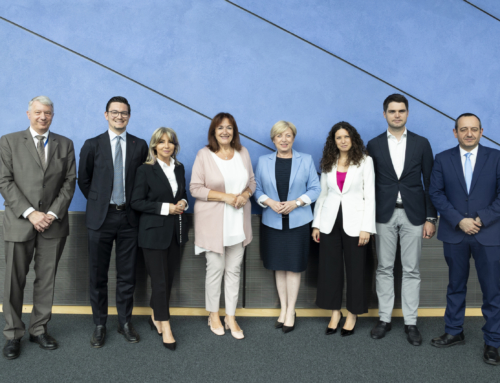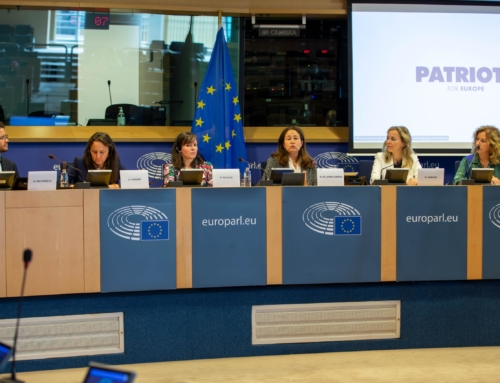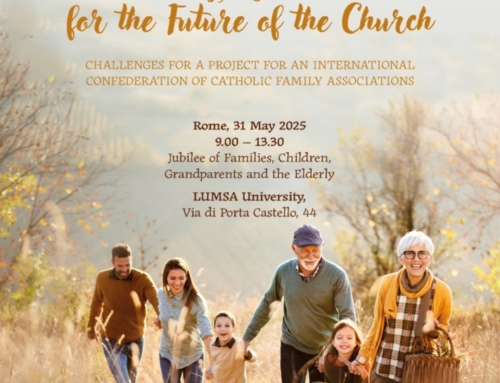19 May 2021
FAFCE contributed to the European Commission’s recent public consultation on gender-based violence and domestic violence. The pdf of FAFCE’s contribution is at the bottom of this page.
What are Gender-Based Violence and Domestic Violence?
“Gender”-based violence refers to the socio-cultural concept of “gender”, i.e. how the biological sex of a person impacts his behaviours or expected behaviours. “Gender” and “sex” thus refer to different notions but cannot be separated nor differ. gender-based violence is used in this context to express violence specifically targeting women.
Gender-based violence can occur at home, in public, and online, not only at the hands of strangers but also of friends, relatives, coworkers, and persons in positions of authority. Domestic violence is the subset of gender-based violence that occurs within the household. Although it occurs in the household in a physical sense, it is not necessarily perpetrated by members of that household but can be committed by visitors.
Both gender-based violence and domestic violence can include violence against children.
Conditions of vulnerability make women more prone to experiencing violence. These include early or advanced age, disability, pregnancy, poverty and social isolation, among others.
Violence includes, but is not limited to, coercive control, psychological and/or emotional abuse, physical or sexual abuse, financial or economic abuse, harassment, and stalking. Online violence possesses its owns characteristics and challenges, with an increased impunity over thanks to the anonymity Internet provides to offenders.
What Causes Gender-Based and Domestic Violence?
Though exist biological differences between the male and female sex, these do not precipitate violence on their own. Rather, the strongest and most consistently reported causes are low education, exposure to maltreatment in childhood, frequent use of pornography, sexual abuse, and substance abuse, including drugs and alcohol.
The pandemic and the lockdown did not create domestic violence but rather intensified some of the conditions that lead to domestic violence. These include increased unemployment, psychological distress, isolation and the de facto imprisonment of persons in their own homes, the closure of shelters, and additional difficulties for associations helping victims of violence.
Gender-Based Violence in Maternal Mobbing
Violence against women also includes gender-based harassment and violence against mothers in the workplace. Women’s ability to be pregnant and give birth to children fuels a gender stereotype that pregnancy and childbearing compel women to behave differently than men in negative ways. Motherhood changes the way in which women are viewed as workers in terms of expected work focus, proficiency and commitment, which creates a ground for discriminatory practices. Maternal mobbing includes refusal to recruit, detrimental changes in the terms of the contract of employment upon return from maternity leave, harassment and even dismissal. In the European Court of Justice’s Webb v EMO Air Cargo case, a pregnant woman’s was dismissed when she tried to take maternity leave because she had not disclosed the fact of her pregnancy during the hiring process.
Gender-Based Violence in Surrogacy
Human trafficking of women also includes the practice of surrogacy, a sex-based violence perpetrated against women. As of 2021, six EU Member States— France, Germany, Italy, Spain, Austria, Estonia and Finland—prohibit surrogacy in all its forms. This practice was repeatedly condemned by the European Parliament, most recently in the Resolution of 21 January 2021 on the EU Strategy for Gender Equality (2019/2169(INI)).
In practice, surrogacy means the exploitation of poorer women for the purposes of providing a child to richer couples. Surrogate mothers are often in situations of vulnerability, facing economic difficulties, and come to sell their body and their reproductive functions in order to support themselves and their family. In addition, the procedure of surrogacy implies medical risks, such as the common lack of post-natal care and an increased risk of postpartum depression, risks that only surrogate women carry, including death.
Gender-Based Violence in Pornography
It is necessary to mention the role of pornography in the perpetration of violence against women. An analysis of the 50 most popular pornographic videos found that 88% of scenes contained physical violence, and 49% contained verbal aggression, 87% of aggressive acts were perpetrated against women, and 95% of their responses were either neutral or expressions of pleasure.[1] In pornography, no mention is made of consent or mutual respect. Exposure to pornography is significantly correlated to the belief that women are sexual objects and that male dominance and female submission are expected gender roles.
Combatting Gender-Based and Domestic Violence
The role of the family
The best approach to reducing and eliminating domestic violence is one focused on prevention. Families can play a major part in this prevention-centered approach. The family is the first school of proper conduct and the primary agent of socialisation for most children, as well as an ongoing witness to the fact that women and man can live together not merely in the avoidance of violence, but also in respect and love.
As stated by Pope Francis in his address for the Celebration of the fiftieth World Day of Peace (1 January 2017): “If violence has its source in the human heart, then it is fundamental that nonviolence be practised before all else within families. […] The family is the indispensable crucible in which spouses, parents and children, brothers and sisters, learn to communicate and to show generous concern for one another, and in which frictions and even conflicts have to be resolved not by dialogue, respect, concern for the good of the other, mercy and forgiveness”.
During a workshop on “The role of education in preventing violence against women” on May 10, 2021 organised by the Committee on Women’s Rights and Gender Equality (FEMM), a panel of experts dissected gender-based and domestic violence from every angle. One of the panelists urged the committee’s members to recognise that “children do not belong to their parents, they have their own rights.” Such a statement misses the potential of the parent-child relationship as a tool for preventing violence. While it is true that children have their own rights, parents must provide them with moral and intellectual edification that prepares them for civic and social life. Parents have the primary responsability the warn their children about harmful gender stereotypes and gender-based violence by modeling appropriate and loving behaviour, respectful of the differences in sex.
The role of family associations
Furthermore, families and family associations help to identify and respond to violence. It can prove difficult for victims to recognise and admit their own victimhood. Families and family associations are an essential resource for recognising whether family members that might be abused start missing out and are hard to speak to or rarely seen anymore. In case of violence, victims can escape to their family members or to a shelter to hide.
Family associations play a key role when the violence comes from within the family. They are relevant intermediaries, able to support and equip victims to escape situations of violence. Family associations can also help to fight deeper causes of violence, such as situations of loneliness, social exclusion, and the precarity of families or family members, which are causes of violent tendencies. Overall, family associations also have a concrete role in education, prevention, as well as training and support to families, via networks where families themselves can support each other.
[pdf-embedder url=”https://www.fafce.org/wp-content/uploads/2021/05/FAFCE-Public-Consultation-on-Gender-Based-And-Domestic-Violence.pdf” title=”FAFCE Public Consultation on Gender Based And Domestic Violence”]
[1] Ana J. Bridges, Robert Wosnitzer, Erica Scharrer, Chyng Sun, and Rachael Liberman, “Aggression and Sexual Behavior in Best-Selling Pornography Videos: A Content Analysis Update,” Violence against Women 16, no. 10 (2010): 1065–1085.







